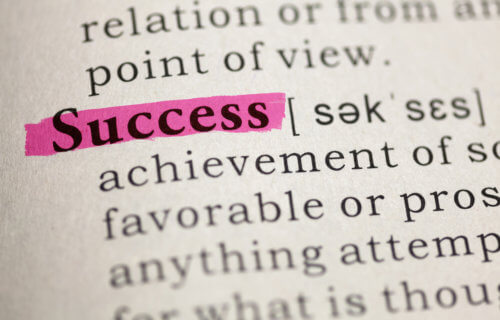Even if it’s been many years since you were last in school, you might still associate this time of year with that “back-to-school” mindset – that feeling of a page turning, a new phase beginning and the chance to start anew and reinvent yourself.
While you won’t find any research on the “back-to-school mindset” itself, this feeling is very similar to what science calls the “fresh start effect”. This is a boost in motivation for change that comes with a shift from one time in your life to another – called a temporal landmark. The beginning of a new school year, birthdays, anniversaries and even Monday mornings are all temporal landmarks.
Temporal landmarks support our belief that we can reinvent ourselves, acting as a threshold to a new start and the chance to leave old habits behind. These landmarks open our minds up to novelty and the possibility of seeing the bigger picture – rather than being mired in our daily slog.
New Year’s Eve is our most well-known marker for fresh starts. But as many of us know, New Year’s resolutions often don’t work when it comes to making lasting lifestyle changes.
This is because resolutions tend to lack specificity, are too ambitious, last too long, or people don’t make necessary changes in their environment to support behavior change (such as finding new hobbies to do on weekends instead of going to the pub if you’re trying to drink less). Feeling you have to make a New Year’s resolution can also lead to failure.
But other temporal landmarks tend to better support changes, not just in ourselves but in our environment too. The new school year, for example, often means a change of routine, but also a change in the clothes we wear and the people we socialize with. All these subtle changes may work together to support your motivation when making a new start.

Our brains love novelty and there’s nothing better than a chance to leave behind the “the treadmill of the predictable everyday flow” of our lives and have a new period to look forward to. This makes motivation easier to come by as it offers a chance to change our circumstances.
While this change in routine can be nerve-wracking, it might be the kind of interruption needed to shift how we think and visualize how we can achieve our goals.
The back-to-school period offers the perfect chance to kickstart any life changes you’ve been meaning to make. Here are a few ways to make sure your goals don’t fail:
1. Write to your future self
Set timers to send yourself aspirational reminders of your goals to gently nudge yourself towards achieving your goals. If you’re trying to save more money, for example, setting a reminder to set aside some cash via an email that appears in your inbox on payday may help give you this much-needed nudge.
2. Don’t worry if you falter
It can be hard to make big changes and build new habits. Even if you don’t succeed in sticking with your changes at first, there are plenty of other temporal landmarks you can find throughout the year that offer a chance for a fresh start (such as your birthday or returning to work after a vacation). Even the smallest period of change offers a chance to make positive lifestyle changes.
3. Quick wins
The motivation and energy provided by a fresh start can often be short-lived. But having quick-win goals that require only small boosts in motivation are the perfect ones to set for yourself during these transition periods. This can include things such as decluttering your room or deleting your most addictive social media app.
4. Put your imperfections behind you
Instead of focusing on who you are now, put your attention on the person you want to be – and use this as motivation to make change. Focusing on who you want to be in the future may also help you leave your imperfections in the past.
5. Set a deadline
Temporal landmarks are great because they provide natural structure and flow to our lives. Not only can you use temporal landmarks to start working towards a goal, but upcoming temporal landmarks can also act as a way of bringing a natural urgency to accomplishing our goals.
6. Avoid the slump
Motivation fluctuates over time. We usually have high motivation when we first set a goal, and high motivation as we get close to achieving it. But the period in the middle tends to be low in motivation – and the longer the period, the harder it is to maintain our resolve. If you want to make the best of the back-to-school mindset, shorten the period of time you want to achieve your goal. This can even be as short as one week or even just one day at a time.
7. Pair the good with the bad
“Temptation bundling” is the practice of pairing something you love with something you’re less enthusiastic about (but know you should do). By pairing these behaviors together, it wires them together in your brain – motivating you to keep working on the thing you may not enjoy as much in the future.
Let’s say you want to exercise more often, for example. Saving an episode of your favorite podcast until you work out may help you feel more motivated to exercise, as you’ll now associate the gym with your favorite podcast.
Making any lifestyle change is hard – but the back-to-school mindset that accompanies the transition from summer into autumn offers a great opportunity to make these changes.![]()
Article written by Trudy Meehan, Lecturer, Centre for Positive Psychology and Health, RCSI University of Medicine and Health Sciences
This article is republished from The Conversation under a Creative Commons license. Read the original article.
